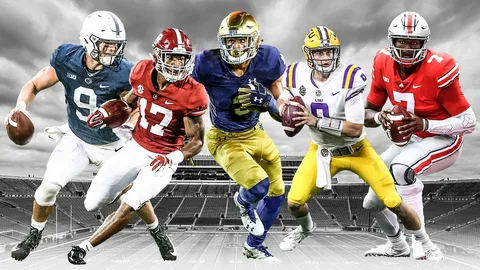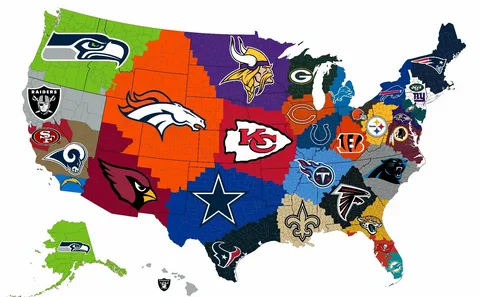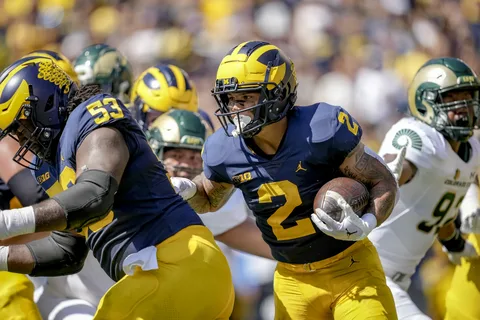
Who Decides College Football Rankings
As of my last knowledge update in January 2023, I’ll provide a general overview of how various college football polls work, including the AP Poll, Coaches Poll, College Football Playoff rankings, FCS (Football Championship Subdivision) poll, and DII (Division II) football polls. Please note that specific details or changes in the process may have occurred after my last update in January 2023.
AP Poll (Associated Press Poll):
- Voting Process: The AP Poll is conducted by a panel of sportswriters and broadcasters, typically consisting of 62 members.
- Frequency: It is released weekly during the college football season and continues into the postseason.
- Ranking Criteria: Voters rank teams based on their performance, taking into account factors such as wins, losses, strength of schedule, and overall team performance.
Coaches Poll:
- Voting Process: The Coaches Poll is voted on by a panel of FBS (Football Bowl Subdivision) head coaches.
- Frequency: Similar to the AP Poll, the Coaches Poll is released weekly during the season and postseason.
- Ranking Criteria: Coaches consider team performance, including wins, losses, and other relevant factors when casting their votes.
College Football Playoff Rankings:
- Selection Committee: The College Football Playoff (CFP) rankings are determined by a selection committee, consisting of former coaches, players, athletic directors, and administrators.
- Frequency: The CFP rankings are typically released weekly, starting midway through the college football season.
- Ranking Criteria: The committee evaluates teams based on their overall performance, strength of schedule, head-to-head results, and other relevant criteria to determine the top four teams eligible for the College Football Playoff.
FCS Poll:
- Voting Process: The FCS (Football Championship Subdivision) poll is conducted by a panel of sports information directors, coaches, and media representatives.
- Frequency: Similar to FBS polls, the FCS poll is released weekly during the season and postseason.
- Ranking Criteria: The criteria for ranking FCS teams are similar to FBS, considering factors such as win-loss records, strength of schedule, and overall team performance.
DII Football Polls (Division II):
- Voting Process: Division II football polls involve a panel of coaches, sports information directors, and media members.
- Frequency: Similar to other college football polls, DII polls are released weekly during the season and postseason.
- Ranking Criteria: Teams in Division II are ranked based on their performance, taking into account various factors like win-loss records, strength of schedule, and other relevant criteria.
These polls play a significant role in shaping perceptions, discussions, and, in the case of the College Football Playoff, determining the national championship contenders. The rankings are dynamic and can change weekly based on teams’ performances throughout the season.
Who #1 In College
It seems like you’ve provided a list of college football teams along with their associated nicknames. Let’s briefly explore each of these:
- Wolverines · Michigan:
- Nickname: Wolverines
- University: University of Michigan
- Football Program: The Michigan Wolverines football program is one of the most storied and successful in college football history. The team has a rich tradition and has produced numerous NFL players and Hall of Famers.
- Huskies · Washington:
- Nickname: Huskies
- University: University of Washington
- Football Program: The Washington Huskies football program has a strong presence in the Pac-12 conference. Over the years, the team has had notable successes, including winning a national championship in 1991.
- Longhorns · Texas:
- Nickname: Longhorns
- University: University of Texas at Austin
- Football Program: The Texas Longhorns football program is widely recognized and has a massive and passionate fan base. The team has had periods of dominance and has produced legendary players and coaches.
- Seminoles · Florida State:
- Nickname: Seminoles
- University: Florida State University
- Football Program: The Florida State Seminoles football program has a strong tradition of success. The team has won multiple national championships and is known for its competitive spirit in the Atlantic Coast Conference (ACC).
- Crimson Tide · Alabama:
- Nickname: Crimson Tide
- University: University of Alabama
- Football Program: The Alabama Crimson Tide football program is synonymous with excellence in college football. Coached by the legendary Nick Saban, the team has won numerous national championships and SEC titles, consistently fielding top-tier talent.
These teams represent some of the powerhouse programs in college football, each with its own unique history, traditions, and fan base. College football is deeply rooted in the culture of these universities, and the competition on the field is not only about winning games but also about the pride and legacy associated with these storied programs.
Why Is College Football So Big
College sports in the United States indeed boast a rich and storied history, often predating many of the professional sports leagues in the country, such as the National Football League (NFL) and the National Hockey League (NHL). This extended history contributes to a unique sense of pride and tradition that resonates deeply with students and fans alike.
Historical Roots:
- Founding Years: Many college sports programs were established in the 19th and early 20th centuries, well before the formation of major professional leagues. For example, college football has roots dating back to the late 1800s.
- Traditions and Rivalries: Over the decades, college sports have cultivated rich traditions, intense rivalries, and iconic moments that have become an integral part of American sports culture. These traditions often span generations, creating a sense of continuity and shared experience among fans.
Sense of Identity and Community:
- Alma Mater Pride: College sports provide students with a unique opportunity to represent their academic institutions on a national stage. The pride associated with wearing one’s school colors and cheering for the home team fosters a deep sense of belonging and identity.
- Community Engagement: College sports often serve as a focal point for community engagement. Games and events bring students, alumni, and local communities together, creating a shared experience that extends beyond the athletic competition itself.
Amateurism and Student-Athlete Narrative:
- Amateur Tradition: College sports are closely tied to the concept of amateurism, emphasizing the participation of student-athletes who compete for the love of the game and for representing their schools.
- Student-Athlete Experience: Unlike professional athletes who are primarily focused on their sports careers, college student-athletes are simultaneously pursuing academic goals. This dual commitment creates a distinct narrative that resonates with fans who appreciate the dedication and hard work required to excel both academically and athletically.
Enduring Popularity:
- Lifelong Allegiance: The fan base for college sports often develops early in life, with individuals forming allegiances to the teams of their parents, hometowns, or alma maters. This allegiance tends to endure over a lifetime, contributing to the longevity and enduring popularity of college sports.
- Cultural Impact: College sports hold a unique place in American culture, influencing traditions, rituals, and even the social calendar. Events like college football Saturdays or March Madness are cultural phenomena that bring people together and capture the national imagination.
In essence, the longer history of college sports in the United States has woven a tapestry of tradition, pride, and community that resonates deeply with students and fans. The passion for college sports goes beyond mere athletic competition; it represents a connection to the past, a celebration of identity, and a source of enduring pride for those associated with these institutions.
Why Is American College Football So Popular
Michigan in football, Duke vs. North Carolina in basketball, and Alabama vs. Auburn in football, to name a few. These rivalries, often steeped in history and tradition, add a layer of intensity and passion that captivates fans and contributes significantly to the popularity of college sports in America.
Entertainment Value:
- Historical Narratives: The rich history of college sports is a compelling narrative that unfolds over decades. Iconic moments, legendary coaches, and historic achievements create a storyline that adds depth and significance to each game.
- Rivalries: The intense rivalries in college sports are a major draw. Whether it’s the Iron Bowl between Alabama and Auburn or the Red River Rivalry between Texas and Oklahoma, these matchups are circled on fans’ calendars, and the anticipation builds throughout the season.
- Tournaments and Playoffs: Events like March Madness in college basketball and bowl season in college football are widely anticipated. The single-elimination format of these tournaments and playoffs adds an element of unpredictability and excitement, making every game a must-watch.
- Overtimes and Close Finishes: The drama of overtimes and close finishes keeps fans on the edge of their seats. The unpredictability of college sports, where any team can pull off an upset, adds to the thrill of the game.
Cultural Significance:
- Community and Alma Mater Pride: College sports provide a sense of community and alma mater pride. Fans, alumni, and students come together to support their teams, creating a shared experience that extends beyond the playing field.
- Traditions and Rituals: From tailgating before football games to the chants and rituals in the stands, college sports are woven into the fabric of American culture. These traditions create a unique and festive atmosphere that enhances the overall entertainment value.
Sports Betting:
- Widespread Interest: The popularity of sports betting, particularly during major events like March Madness, has added another layer of engagement. Fans become invested not just emotionally but also financially, leading to a broader and more diverse audience.
- Bracket Challenges: Events like the NCAA basketball tournament, with its bracket challenges, have become cultural phenomena. Friends, family, and coworkers often participate in bracket pools, adding a social and competitive aspect to the viewing experience.
Accessibility:
- College Spirit and Camaraderie: The college atmosphere, with student sections, marching bands, and mascots, contributes to the festive and spirited nature of college sports. This creates an environment where fans feel connected to the energy and enthusiasm of the game.
- Regional Loyalties: College sports often tap into regional loyalties, with fans supporting local universities and colleges. This regional connection fosters a sense of pride and identity that resonates with a broad audience.
In conclusion, the multifaceted appeal of college sports in America stems from the perfect blend of historical significance, intense rivalries, thrilling tournaments, cultural traditions, and the sheer entertainment value of the games. This combination creates an enduring love for college sports that transcends generations and continues to captivate fans across the nation.
Who Is The Greatest College Football Team
As of May 16, 2020, discussions about the greatest college football teams of all time often feature legendary squads that left an indelible mark on the sport. Here are three teams highlighted from the list of the 10 Best College Football Teams of All Time:
1. 2001 Miami Hurricanes:
The 2001 Miami Hurricanes are widely regarded as one of the greatest college football teams in history. Coached by Larry Coker, this team featured an exceptional roster filled with future NFL stars. The Hurricanes went undefeated during the regular season and dominated opponents with a blend of offensive firepower and a ferocious defense led by standout players such as quarterback Ken Dorsey and safety Ed Reed. They capped off their remarkable season with a convincing victory over Nebraska in the BCS National Championship Game.
2. 1971 Nebraska Cornhuskers:
The 1971 Nebraska Cornhuskers, led by legendary coach Bob Devaney, demonstrated a brand of football dominance that solidified their place among the all-time greats. Featuring the “Game of the Century” against Oklahoma, Nebraska emerged victorious and went on to claim the national championship. With a powerful rushing attack, anchored by Heisman Trophy winner Johnny Rodgers, and a stout defense, the Cornhuskers displayed an unmatched level of excellence.
3. 1972 USC Trojans:
Under the guidance of coach John McKay, the 1972 USC Trojans assembled one of the most talented and successful college football teams. Led by Heisman Trophy-winning running back Anthony Davis and quarterback Mike Rae, USC went undefeated during the regular season. The Trojans showcased their offensive prowess and secured the national championship by defeating Ohio State in the Rose Bowl. This team is celebrated for its dynamic playmakers and balanced approach to the game.
These teams, along with the others on the list, are often a subject of passionate debate among college football enthusiasts. Factors such as overall record, the level of competition faced, individual talent, and the team’s impact on the sport contribute to their inclusion among the best in college football history. The 2001 Miami Hurricanes, 1971 Nebraska Cornhuskers, and 1972 USC Trojans, in particular, are remembered as exemplars of excellence, each leaving an enduring legacy within the realm of college football.who are the top 25 in college football
The phrase “Others Receiving Votes” is a common feature in college sports polls, indicating teams that didn’t make it into the official rankings but received recognition and consideration from voters. The list you provided includes teams that received votes in a particular poll, with the number of votes each team received. Let’s take a brief look at some of these teams:
Clemson (87 Votes):
- Program Excellence: Clemson has become a powerhouse in college football under the leadership of Coach Dabo Swinney. The team’s recent successes include multiple appearances in the College Football Playoff and national championships.
Troy (65 Votes):
- Sun Belt Contender: Troy, a member of the Sun Belt Conference, has had notable successes in recent years. The program is recognized for its competitiveness and ability to challenge larger opponents.
Utah (39 Votes):
- Pac-12 Competitor: The Utah Utes, competing in the Pac-12 conference, have been a consistent force in college football. Their strong performances often position them as contenders in the conference.
Kansas State (38 Votes):
- Big 12 Presence: Kansas State, a member of the Big 12, has a history of fielding competitive teams. The program is known for its resilience and has had successful seasons under the guidance of Coach Bill Snyder.
Miami (Ohio) (31 Votes):
- Mid-American Conference: Miami University, representing the Mid-American Conference (MAC), has had moments of success and has been a competitive force within its conference.
Toledo (22 Votes):
- MAC Competitor: The Toledo Rockets, also part of the MAC, have been a consistent presence in the conference’s football landscape.
Kansas (8 Votes):
- Big 12 Football: The Kansas Jayhawks, a member of the Big 12, have faced challenges in recent years but continue to compete in a highly competitive football conference.
Kentucky (4 Votes):
- SEC Program: Kentucky competes in the Southeastern Conference (SEC), one of the most prestigious conferences in college football. The program has shown resilience and competitiveness within the conference.
Receiving votes, even if a team doesn’t crack the official rankings, is a recognition of their performance and potential. It signifies that voters acknowledge the team’s accomplishments and consider them as noteworthy within the broader college football landscape. The “Others Receiving Votes” section often reflects the depth and diversity of talent across various conferences in college football.






